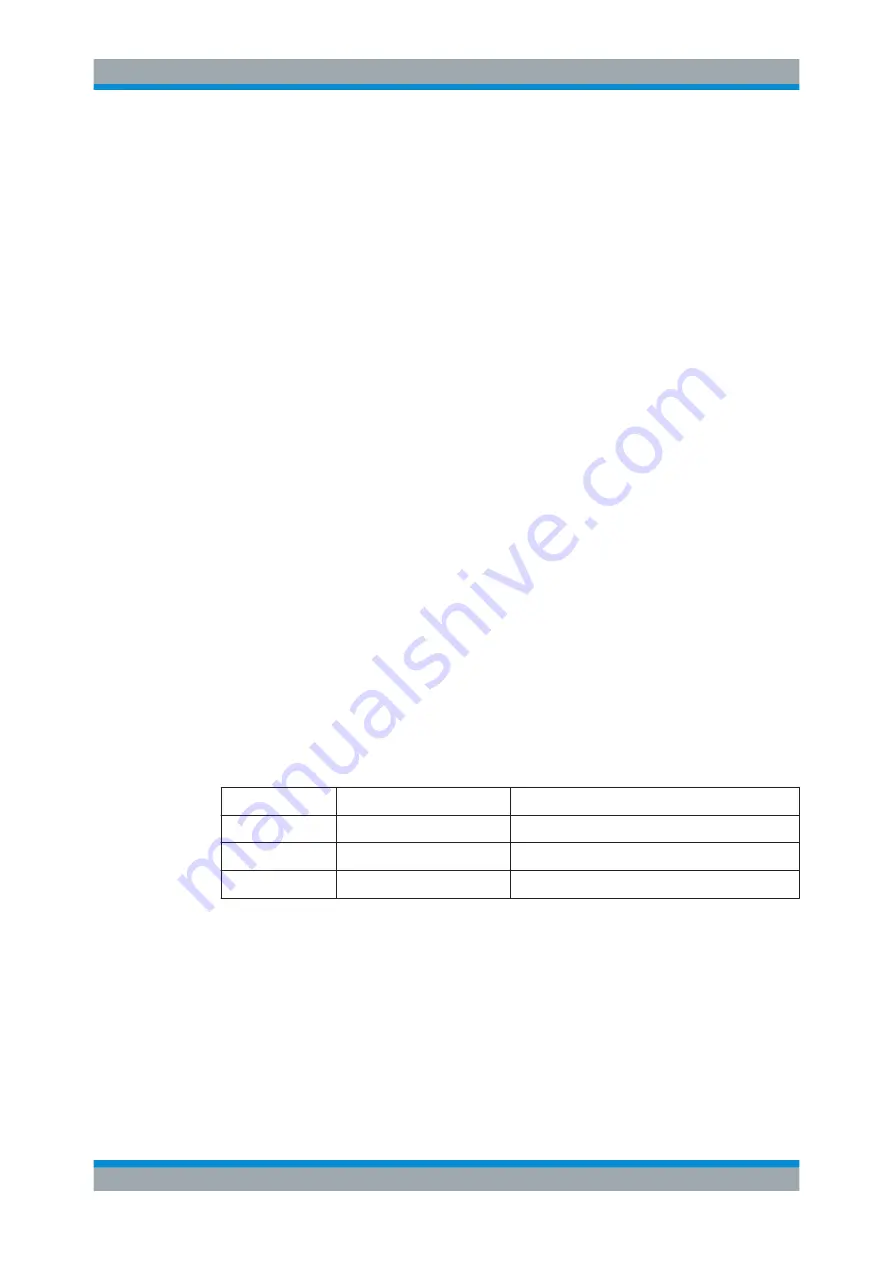
Network and Remote Operation
R&S
®
FSVA3000/ R&S
®
FSV3000
655
User Manual 1178.8520.02 ─ 01
–
Common commands
: their function and syntax are precisely defined in stan-
dard IEEE 488.2. They are employed identically on all instruments (if imple-
mented). They refer to functions such as management of the standardized sta-
tus registers, reset and self-test.
–
Instrument control commands
refer to functions depending on the features of
the instrument such as frequency settings. Many of these commands have also
been standardized by the SCPI committee. These commands are marked as
"SCPI confirmed" in the command reference chapters. Commands without this
SCPI label are device-specific; however, their syntax follows SCPI rules as per-
mitted by the standard.
Instrument responses
Instrument responses (response messages and service requests) are messages the
instrument sends to the controller after a query. They can contain measurement
results, instrument settings and information on the instrument status.
13.1.5
SCPI Command Structure
SCPI commands consist of a header and, in most cases, one or more parameters. The
header and the parameters are separated by a "white space" (ASCII code 0 to 9, 11 to
32 decimal, e.g. blank). The headers may consist of several mnemonics (keywords).
Queries are formed by appending a question mark directly to the header.
The commands can be either device-specific or device-independent (common com-
mands). Common and device-specific commands differ in their syntax.
13.1.5.1
Syntax for Common Commands
Common (= device-independent) commands consist of a header preceded by an aster-
isk (*), and possibly one or more parameters.
Table 13-3: Examples of common commands
*RST
RESET
Resets the instrument.
*ESE
EVENT STATUS ENABLE
Sets the bits of the event status enable registers.
*ESR?
EVENT STATUS QUERY
Queries the contents of the event status register.
*IDN?
IDENTIFICATION QUERY
Queries the instrument identification string.
Remote Control Basics






























